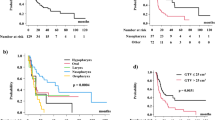Abstract
TELETHERAPY units using radium are limited in usefulness by the low radiation intensities produced by the small amounts of radium which can be used. To secure an adequate dosage-rate, the distance between the source and the tumour cannot be more than a few centimetres, and therefore the dose delivered to the skin lying between the source and the tumour is much higher than that delivered to the tumour. The dose-rate below the surface, expressed as a percentage of the dose-rate at the skin, decreases very rapidly with increasing depth. Thus the percentage depth-dose is influenced primarily by the inverse square law, and one of the chief advantages of high-energy radiation, namely, its small attenuation by the tissue between the source and the tumour, is not realized.
This is a preview of subscription content, access via your institution
Access options
Subscribe to this journal
Receive 51 print issues and online access
$199.00 per year
only $3.90 per issue
Buy this article
- Purchase on Springer Link
- Instant access to full article PDF
Prices may be subject to local taxes which are calculated during checkout
Similar content being viewed by others
References
Brit. J. Rad. (in the press).
Miller, H., Brit. J. Rad., 23, 731 (1950).
Trump, J. G., and Cloud, R. W. Amer. J. Roent. and Rad. Ther., 49, 531 (1943).
Author information
Authors and Affiliations
Rights and permissions
About this article
Cite this article
JOHNS, H., BATES, L., EPP, E. et al. 1,000-Curie Cobalt-60 Units for Radiation Therapy. Nature 168, 1035–1036 (1951). https://doi.org/10.1038/1681035a0
Issue Date:
DOI: https://doi.org/10.1038/1681035a0
Comments
By submitting a comment you agree to abide by our Terms and Community Guidelines. If you find something abusive or that does not comply with our terms or guidelines please flag it as inappropriate.



